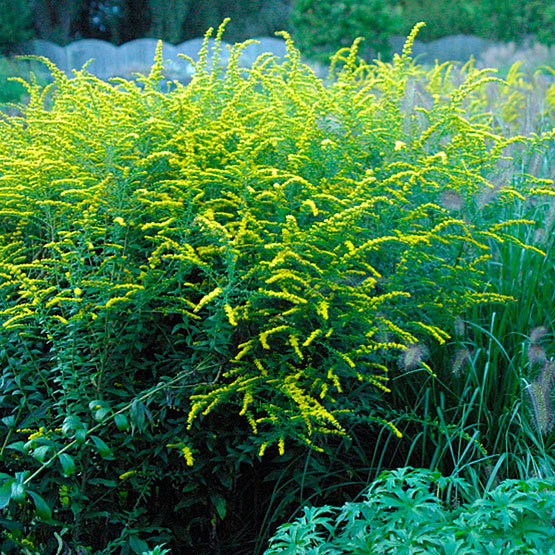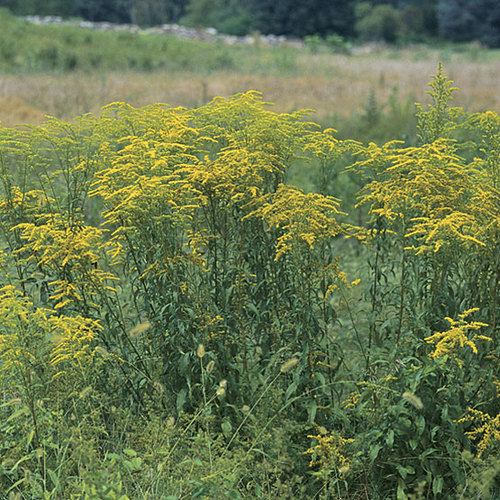
Most Solidago species hail from the prairies, roadsides, open woods, and riverbanks of North America. Many species are somewhat coarse looking and invasive and therefore are more suitable to wild areas, where they can thrive en masse. Cultivated varieties are noted for their showier flowers, distinct habits, and less vigorous nature. Most exhibit numerous, small flowers along upward-facing racemes or spikey racemes, and stiff, branching stems. The genus name stems from the Latin solido, which means “to make whole,” and refers to the medicinal properties of the genus. It is often held falsely responsible for hayfever, for which Ambrosia species are the main allergen.
Noteworthy CharacteristicsSolidago reliably provides end-of-season color in blazing shades of yellow to the wild garden or naturalistic plantings
CareGrow in lean to moderately fertile, well-drained soil in full sun; some species prefer shade. Deadhead to prevent prolific self-seeding.
PropagationDivide in spring or fall.
ProblemsSpot anthracnose, powdery mildew, rust, fungal spots



























